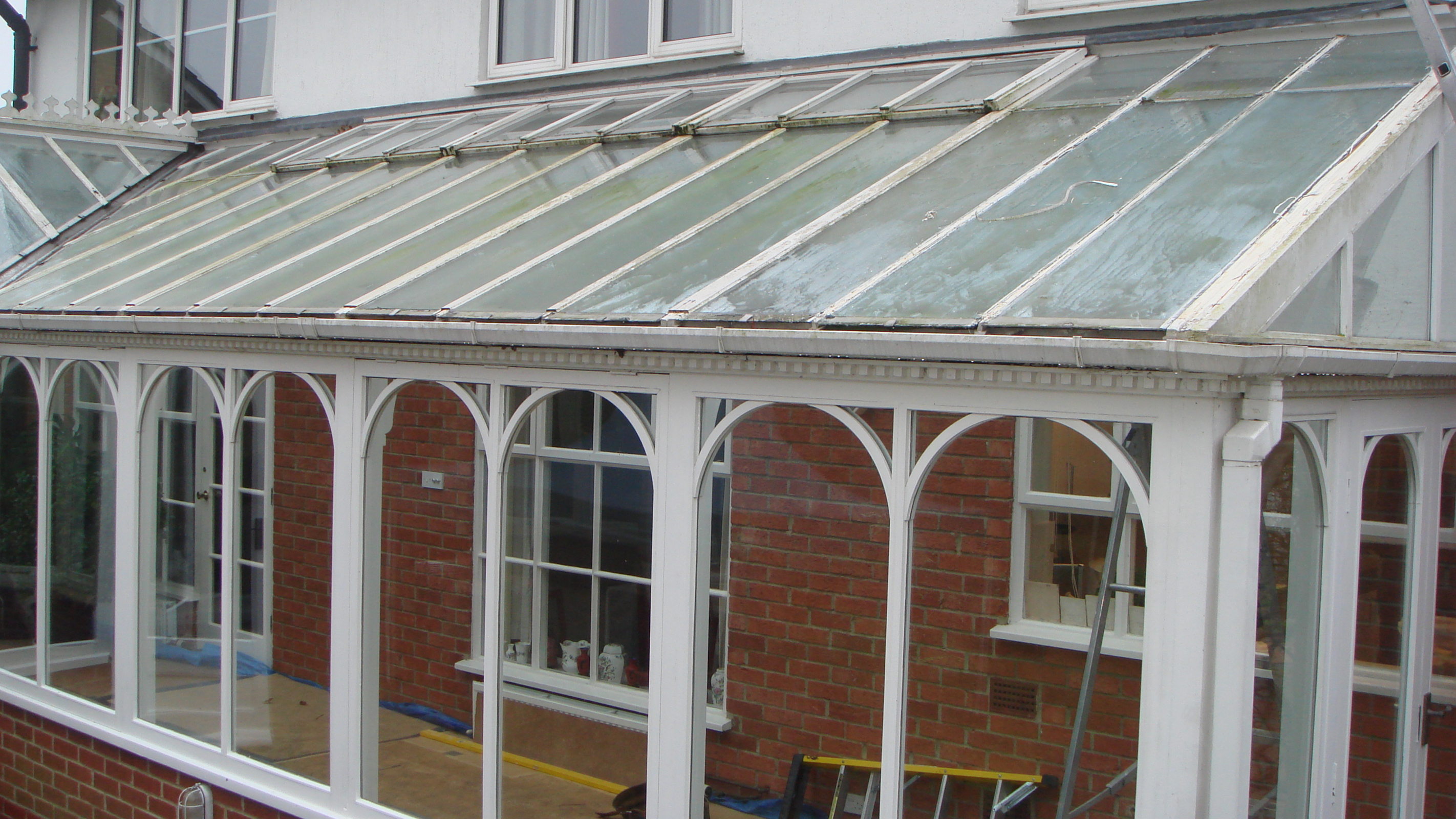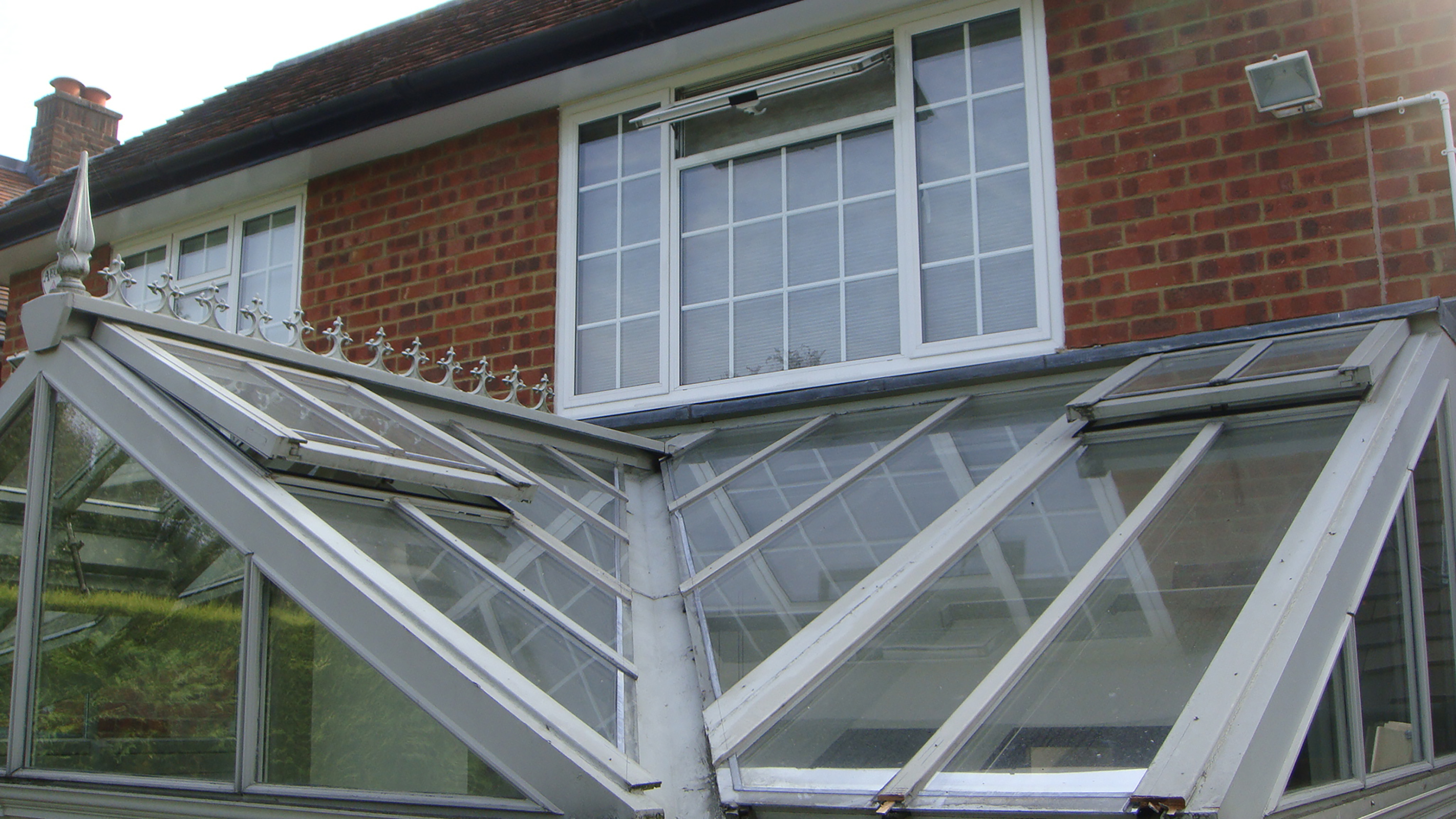Repairing Conservatory Roofs: How to Fix Common Issues
Repairing conservatory roofs and sources of leaks need not be a headache with our simple guide to the most common problems and their solutions

Repairing conservatory roofs is vital if previously warm and sunny spaces are now leaky and cold.
While these bright, light-filled structures can be wonderful additions to any style of home, time can take its toll on their glass construction. Without proper maintenance and care, problems can arise with the roof structure, leading to compromised thermal efficiency and leaks.
If left untreated, these issues can become dangerous too, and may necessitate the need for complete conservatory roof replacement.
In our guide to repairing conservatory roofs, we take a look at the most common issues faced by conservatory owners and how to put them right.
Common Reasons For Repairing Conservatory Roofs
There are several reasons why you might be interested in learning more about repairing a conservatory roof. Perhaps the problem has become apparent due to an obvious leak, or maybe you noticed an issue when making some routine maintenance checks or whilst clearing the gutters.
Sometimes just general wear and tear will mean repairs need to be carried out, while storms, extreme weather conditions, tiles slipping from the roof of a house, errant footballs and even ground movement can all also cause damage.
"Often, repairing a conservatory roof is a relatively easy and inexpensive task to undertake, but it's important to get to the root cause and fix the issue before it results in further issues such as condensation in conservatories, more damage or worse — complete replacement," says Homebuilding & Renovating's editor, Claire Lloyd.
Bring your dream home to life with expert advice, how to guides and design inspiration. Sign up for our newsletter and get two free tickets to a Homebuilding & Renovating Show near you.
Whatever the cause, the most common reasons for conservatory roof repairs include:
- Cracked or damaged roof panels
- Slipped roof panels
- Blocked or damaged guttering
- Faulty flashing
- Damaged roof vents
- Rotten timber ridges or frames


Repairing a Leaking Conservatory Roof
For many people one of the first signs that there is something wrong with their conservatory roof is leaks.
All of the above issues can result in a leaking conservatory roof — put the problem right and the leak should stop. In the meantime, be sure to protect the interior of your conservatory and any furniture within to prevent too much damage from occurring.
Here we look at the common reasons for a leaking conservatory roof in more detail.
1. Damaged Conservatory Roof Panels
Cracks in your conservatory roof? Damaged or cracked panels need replacing as soon as possible in order to avoid further issues, such as leaks and damp.
The good news is that replacing a single glass or polycarbonate panel in a conservatory roof is pretty straightforward. The damaged section is removed and a new one fixed into place. For glass conservatory roofs, this really is a job best left to the professionals, while some DIYers do feel confident tackling the replacement of polycarbonate panels.
"If there is a cracked roof panel then we need to find out if the glass is old float glass or if it is safety laminated glass," explains Leslie George from Mark George Conservatories.
"Most modern conservatories use toughened glass which doesn’t crack but instead breaks into small pieces. Older conservatories (over 30 years old) may have float glass roofs which becomes brittle over time and they are quite dangerous to work off, so you need to have an expert who knows how to safely work on these glass roofs.
"A cracked roof glass unit or a broken down misted glass unit can be easily replaced. If it is deemed to be unsafe then the unit can be removed and boarded over until the replacement glass can be fitted."


2. Slipped Conservatory Roof Panels
Should one or more of the panels in your conservatory roof slip, a gap will appear at the ridge of the roof, meaning water can get in — which could result in damp and interior damage.
Slipped conservatory roof panels are particularly common in polycarbonate roofs. Once a panel has slipped, the roof will be prone to leaks and draughts due to the gap that will appear at the top. This issue happens for several reasons, including broken or missing end caps, high winds or general ageing.
Rather than just pushing the slipped panels back into place (where they will probably just slip again), they should be secured properly.
End caps and retainers should be located at the end of the roof glazing bars that divide roofing panels. As well as giving the roof a decorative finish, they also prevent the roofing panels from slipping. If they have become damaged or worn, new end caps and retaining clips will be needed to secure the panel back into place.
3. Blocked or Damaged Guttering
If any of the guttering or downpipes serving your conservatory have become blocked, cracked or damaged in some other way, leaks could well occur internally.
Water ingress inside or externally on a conservatory hint that there could be a leak in the lining of box guttering — which can be trickier to seal than a standard gutter. Removing old sections of the gutter and replacing them with new pieces and fresh seals should put this problem right.
In cases where gutters are blocked, freeing them of debris and cleaning them should solve the problem, but if they are damaged, they will need replacing. Once the problem is rectified, consider fitting a gutter guard or netting to prevent any further build up of debris.
4. Fixing a Leaking Conservatory Where it Joins the House
If you find that your conservatory roof is leaking where it adjoins your house, it is likely that the flashing is to blame. The flashing, which looks like a strip of lead, can often deteriorate over time (or may never have been properly fitted in the first place).
"Leaks can be down to a number of issues on a glass roof," advises Leslie George. "However, if there is a leak that is specifically due to damage to the lead flashings, either a small repair to the existing lead will be required or all new Code 4 lead flashings can be fitted. A site survey will need to be carried out to ascertain what work is required."
Although some people do tackle this job themselves, if you decide to take the DIY route you will need a good ladder, new lead flashing and sealant as well as tools to cut the flashing and remove old mortar. Getting the seal correct is vital for this job to be a success.


5. Damaged Roof Vents
A very common cause of leaking conservatory roofs are damaged or faulty roof vents. While vents are essential for good ventilation and for preventing condensation in a conservatory, if they are compromised issues can arise.
It may simply be a case of applying a new seal around the vent, or it might be that it requires complete replacement. If you are simply replacing a roof vent on a like-for- like basis, this is a job within the capabilities of many DIYers.
6. Rotten Timber Ridge
If you have an old timber conservatory, it is possible that the timber frames or ridge has rotten over the years.
If you find a good joiner or conservatory repair specialist, they will often be able to treat smaller areas of rotten timber by splicing in new sections of timber. In the case of larger areas of timber damage and decay, replacement panels can be fitted to match the originals.
"If a client has a rotten timber ridge then we would recommend that a new wood cored lead ridge is fitted," says Leslie George. "If the wall frames are rotten, depending on the amount of rot, we can cut out the rot and splice in new hardwood sections. If the rot is too far gone, to save the panel we will supply and fit a new bespoke hardwood panel to match in with the existing design and specifications.
"If all the wall sections need to be replaced but the roof is still in good order then we are able to support the conservatory roof and replace all the wall sections, even changing the design if required by the client."
Is a Leaky Conservatory Roof Beyond Repair?
In some cases, a conservatory roof will be too badly damaged or constructed to make it worthwhile or feasible to save it — in which case conservatory roof replacement will be required.
"If a number of roof glass units are all broken down (i.e. have condensation in them) then it is time to consider replacing all the roof units and fitting a more thermally efficient double glazed roof, as standards of glass manufacture and solar control have improved a lot in recent years," explains Leslie George.
"Keeping your conservatory roof in good order and leak free is the most important factor in maintaining your timber conservatory, as well as maintaining the exterior joinery work by decorating every five or so years."
Natasha was Homebuilding & Renovating’s Associate Content Editor and was a member of the Homebuilding team for over two decades. In her role on Homebuilding & Renovating she imparted her knowledge on a wide range of renovation topics, from window condensation to renovating bathrooms, to removing walls and adding an extension. She continues to write for Homebuilding on these topics, and more. An experienced journalist and renovation expert, she also writes for a number of other homes titles, including Homes & Gardens and Ideal Homes. Over the years Natasha has renovated and carried out a side extension to a Victorian terrace. She is currently living in the rural Edwardian cottage she renovated and extended on a largely DIY basis, living on site for the duration of the project.

